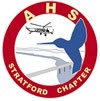The AH-1Z now in full rate production is the latest iteration of the US Marine Corps Cobra attack helicopter and shares avionics, dynamics, engines, and structures with the UH-1Y utility helicopter to reduce expeditionary supply, maintenance and training burdens in mixed light attack squadrons. The Marines first received Navy approval to buy the Bell Cobra in 1967, the same year the US Army took the two-seat, two-bladed, single-engine attack helicopter to war in Vietnam. Delivery of 38 Marine AH-1Gs with the 1,400 shp Lycoming T53-L-13 turboshaft started in 1969. The success of the 9,500 lb AH-1G in Vietnam soon led to the twin-engined AH-1J SeaCobra with a coupled 1,800 shp T400-CP-400 power pack from United Aircraft of Canada. Bell ultimately built 69 marinized AH-1Js for the Marine Corps between 1970 and 1975 and delivered AH-1Js to the Imperial Iranian Air Force and the Republic of Korea.
The 10,000 lb AH-1J was armed initially with only a 20 mm cannon and unguided rockets. The need for a standoff missile and greater aircraft endurance led to the 14,000 lb AH-1T SeaCobra first delivered in 1977 with a 1,970 shp Canadian Pratt & Whitney T400-WV-402 Twin Pac and two-bladed broad-chord main rotor. Of 59 AH-1Ts built, most were retrofitted with the Hughes TOW (Tube-launched, Optically-tracked, Wire-guided) missile capability after delivery. Bell flew twin General Electric T700 turboshafts on an AH-1T demonstrator in 1980 and productionized the AH-1T+ in 1983 with 3,250 shp installed power from twin T700-GE-401 engines. The production AH-1W could carry TOW and laser-designated Hellfire missiles, 70 mm rockets, Sidewinder air-to-air missiles, the 20 mm cannon, and an Elbit-Kollsman Night Targeting System (NTS). AH-1Ws in Operation Iraqi Freedom used both types of missiles for direct and indirect fire engagements. The Marines took delivery of 204 converted and new-production AH-1W SuperCobras from 1986 to 1996. The Republic Of China Army Air Force received 42 AH-1Ws and the Turkish Land Forces 10 SuperCobras.
With a four-bladed main rotor, uprated dynamics, and integrated avionics, the 18,500 lb AH-1Z first flew in 2000 but did not complete Operation Evaluation until 2010. In strike missions on early sea deployments in 2011, two Zulu Cobras proved able to carry the ordnance of four AH-1Ws and could engage targets at far greater standoff ranges. The Lockheed Martin AN/AAQ-30 Target Sight System (TSS) with mid-wave infrared, color TV, laser designator/rangefinder, laser spot tracker. Thales Optimized Top Owl helmets include Head-Up Displays with day or night monocles used alone and in conjunction with standard Night Vision Goggles. The AH-1Z achieved Initial Operational Capability and started combined sea deployments with the UH-1Y in 2011. The Hellfire-armed attack helicopter has identical front and rear cockpits built around a Northrop Grumman Integrated Avionics System with color Multi-Function Displays, sidestick controls, and helmet-mounted displays. By early 2013, the Marines had 29 AH-1Zs. Under current plans, Bell will remanufacture 131 AH-1Ws to AH-1Zs and build-new 58 Zulu Cobras delivered by Fiscal 2020. Near-term improvements for the new Marine attack helicopter focus on digital connectivity to stream video between the Zulu crew and Forward Air Controllers.
